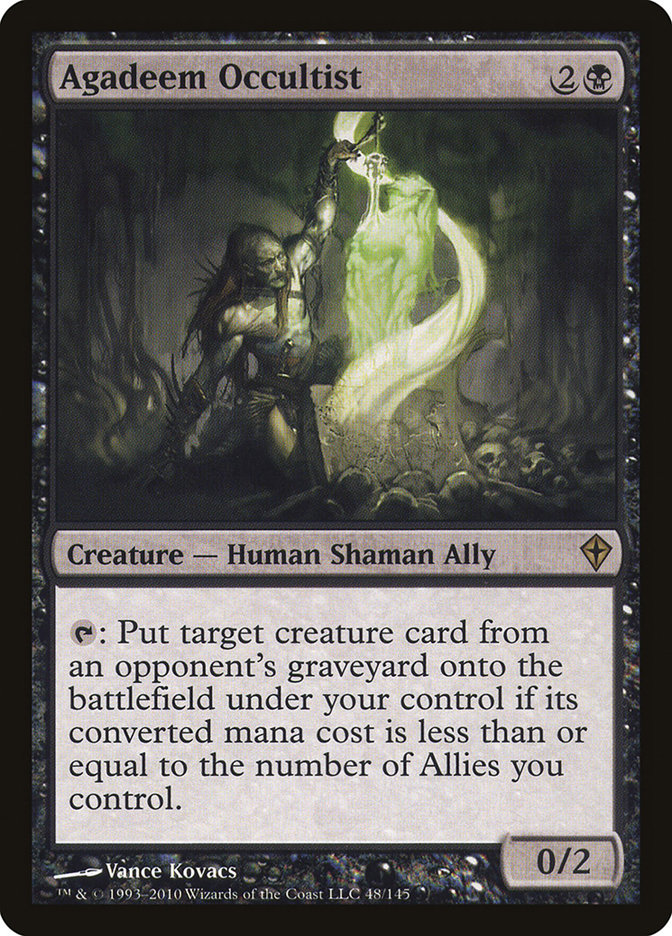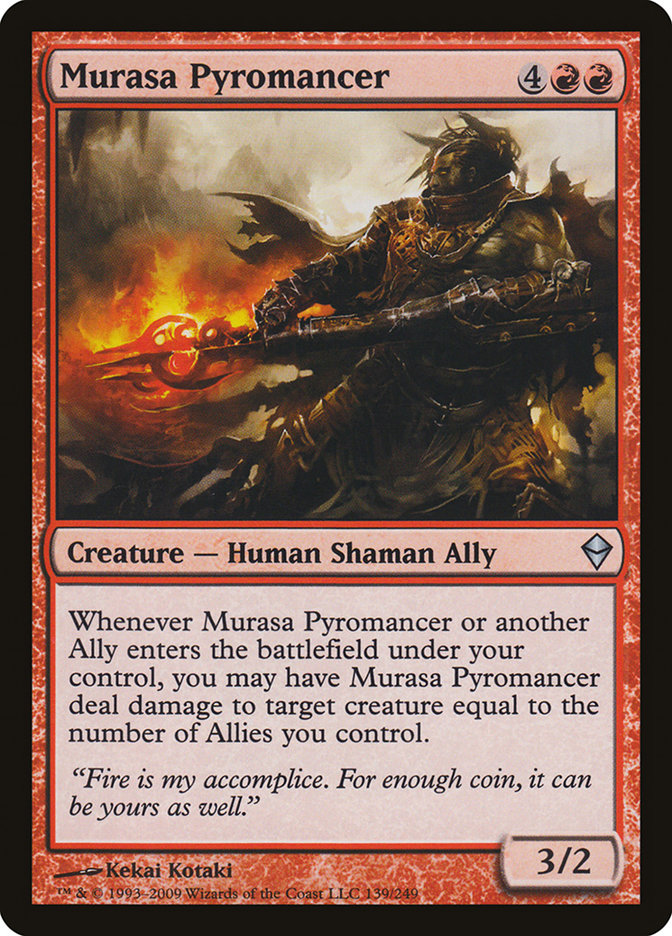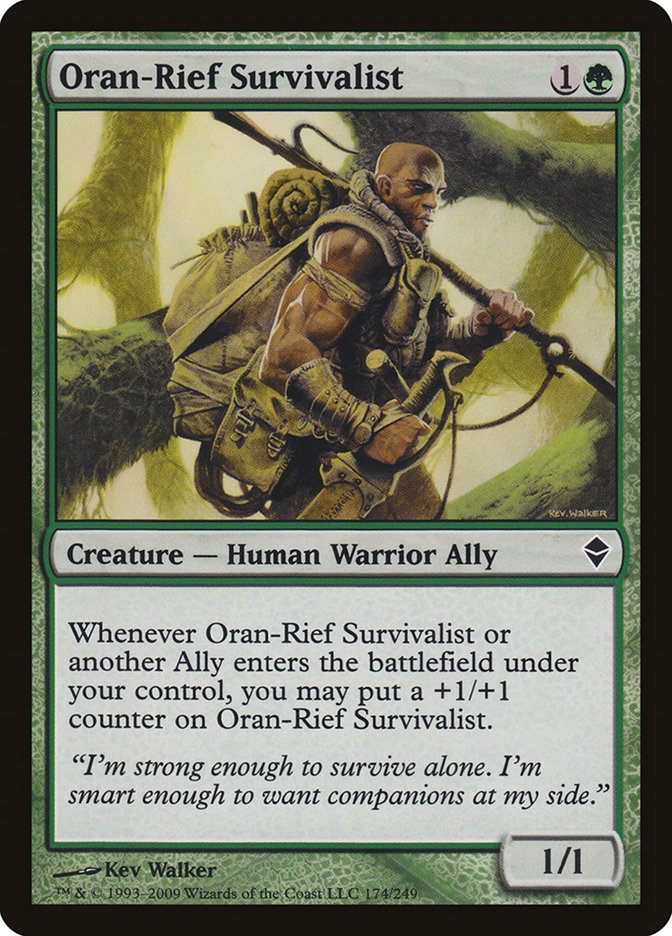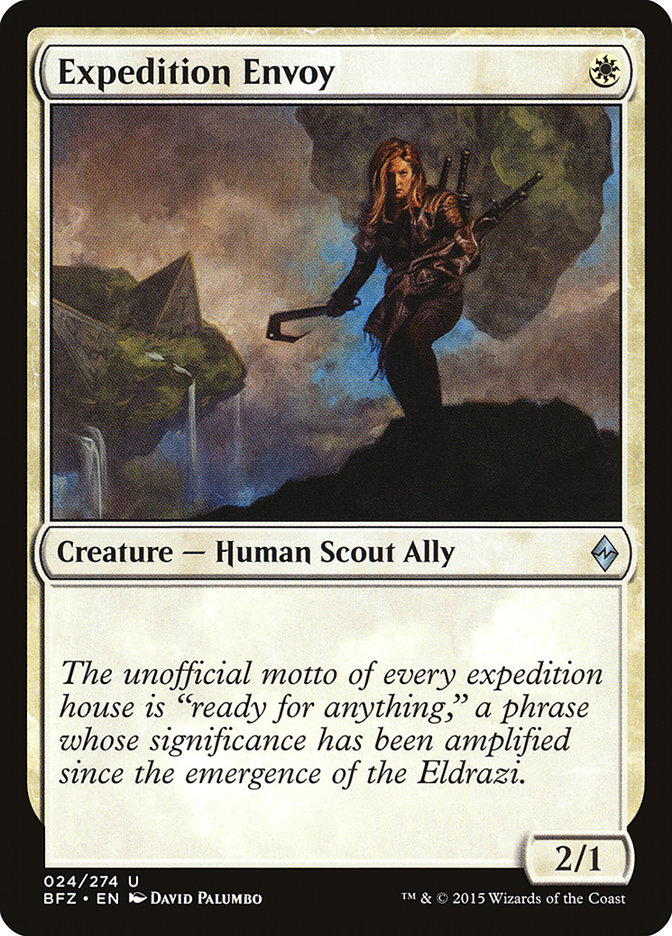Battle for Zendikar
has heralded the return of landfall, land-based mechanics, and, well, the potential for easy four-color decks in Standard, if we’re being honest. As a
plane, Zendikar has historically been all about adventure, but that adventure was often dangerous. To help mitigate the perils of exploration and
discovery, Zendikar featured a group of creatures called Allies.
Allies gained bonuses from other denizens of the plane, each of whom was hardy and steadfast to fight off the beasts, pitfalls, and, eventually, the
Eldrazi that dominated the plane. This mechanic was familiar, but still somewhat unusual in the fact that it covered every color. Every Ally got better by
virtue of being an Ally, and thus Ally decks popped up here and there in the contemporary metagame. Six years ago, I played an Ally deck almost
exclusively.
Creatures (22)
- 2 Kabira Evangel
- 4 Kazandu Blademaster
- 2 Kazuul Warlord
- 4 Steppe Lynx
- 4 Akoum Battlesinger
- 4 Hada Freeblade
- 2 Talus Paladin
Lands (21)
Spells (17)

This deck, with a good hand, could take down the Zoo and Control decks with relative ease. I played in a PTQ with it, and played it for many weeks,
rotating pieces as their tenure in Standard expired. It was a load of fun, and while a bit monotone, it was a clear, crisp tone.
Allies were exciting back then, but now that they’ve returned to Standard after six years of not getting played in any format, they still aren’t able to
break through. What gives?
Not sure how often I can use this excuse, but yeah, Siege Rhino has become this format’s Thragtusk: if you’re not playing it, you have to know how to
answer it. The Ally deck I played in 2009 would likely be terrible nowadays, even after tuning. Siege Rhino would not only stonewall my creatures, but it
undoes a Lightning Bolt or Searing Blaze, too. Siege Rhino, and the age of efficient creatures that’s emerged in general since original Zendikar
released, has made Ally synergies less practical. Why use two cards when one will do, right?
I’d like to use two. A hyper-successful Ally deck has yet to emerge, and win or lose, I intend to find out why. Like most tribal creature themes, Allies
work best when they’re together. While they can attack and block like any other creature, chaining Allies together can often bring a lot more power to a
game than just power and toughness. Deciding to play Allies is one thing, but finding the right mix, especially when every color is open to you, is a bit
more difficult.
Unlike how I imagine the majority of my decks are created, an Ally deck takes a bit less innovation and a bit more analysis. This left-brain approach is
necessary to determine the right mix of colors, costs, and non-Ally spells. It’s more of a math problem than a deckbuilding problem.
I’ve been trying different combinations of Ally builds since the set first came out, as demonstrated by the first deck I brought for the release weekend.
Creatures (28)
- 3 Anafenza, the Foremost
- 4 Siege Rhino
- 3 Gilt-Leaf Winnower
- 4 Hangarback Walker
- 1 Lantern Scout
- 1 Tajuru Warcaller
- 4 Skyrider Elf
- 4 Woodland Wanderer
- 4 Beastcaller Savant
Planeswalkers (2)
Lands (25)
Spells (5)

Since I failed that first challenge, I’ve been trying to answer the Ally question, opting for multiple iterations and casual testing on the side. Through
testing of nearly all 37 Allies currently in Battle for Zendikar, I discovered three critical facts about Allies.
Many do not scale.
Many times, the card you see is the card you get. Take Expedition Envoy.
This is a 2/1 for one white mana. That’s all it’ll ever be. Besides a cheap rally trigger, an Expedition Envoy can’t hope to be much more; thus, it would
be said to not scale. Kytheon, Hero of Akros scales well. In the earlygame, it’s a great turn 1 play. In the midgame, you have a chance to flip it by
attacking with two creatures. At the end of the game, it can hold off huge attackers or survive removal spell after removal spell thanks to its relatively
cheap indestructibility. Expedition Envoy doesn’t have that, and many others don’t, either.
Many Allies fail the vanilla test.
For those who don’t know, the “vanilla test” is used to determine if a creature is playable purely on its stats. This is important in determining whether
it will have an impact in the most basic ways possible, such as in combat, if its abilities cannot be activated or are otherwise irrelevant. While a 2/1
for one is fine, a 2/1 for five isn’t. Tajuru Warcaller, one of my favorite singletons in my week one deck, is pretty bad if you don’t have a lot
of creatures. A 2/1 for five mana that doesn’t result in an attack is a bit sad, so it would “fail the vanilla test.” Similary, cards like Chasm Guide, a
3/2 for four, are unexciting at best.
No Ally can remove another creature or provide reliable inevitability.
Unlike Zendikar days, where Murasa Pyromancer and Hagra Diabolist saw at least a small margin of play, you could kill creatures and/or drain large
amounts of life outside of combat, respectively. Today’s Ally decks must outsource their removal and lategame reach; they are otherwise completely reliant
on combat to do the deed. What if there was a rally trigger with an effect like Flickerwisp for enemy creatures? Something like that might help a lot.
These are serious strikes against Ally decks, but knowing that’s the case before you go into building yours will help you understand what you need to do to
make it work for you.
The way I see it, there are three strategies available to us to build an Ally deck.
Strategy 1: Aggro
The most straightforward plan, this gives up scaling for speed.
Creatures (31)
- 2 Kytheon, Hero of Akros
- 4 Veteran Warleader
- 3 Lantern Scout
- 4 Drana's Emissary
- 4 Beastcaller Savant
- 4 Expedition Envoy
- 4 Cliffside Lookout
- 2 Kor Bladewhirl
- 4 Kor Castigator
Lands (22)
Spells (7)

The idea here is to make our one-drops as good as possible. Ten cards can be cast on turn 1, and we’ve got sixteen lands to do it with. Moreover,
Beastcaller Savant can land any of them on turn 2 after being cast. The power of this deck comes in the three-drops, which include eleven great Allies and
ringers like Abzan Ascendancy, which can make those little 2/1s and 1/1s a bit more meaty. Kytheon, while not an Ally, fits the bill well and can survive
whatever creates Spirits off the Ascendancy to attack alongside them the following turn.
This deck wants to kill you ASAP, but in case that’s not the best idea in your metagame, let’s look at strategy two.
Strategy Two: Midrange
Creatures (31)
- 4 Veteran Warleader
- 4 Lantern Scout
- 4 Drana's Emissary
- 1 Munda, Ambush Leader
- 4 Woodland Wanderer
- 4 Beastcaller Savant
- 1 Firemantle Mage
- 1 Kor Bladewhirl
- 4 Kor Castigator
- 4 Tajuru Stalwart
Lands (24)
Spells (5)

You give up all your one-drops here, but you make up for it with better draw steps across the game. You’re still assembling an army, but your creatures are
a little sturdier, and you’re trading the cheap drops for more flexibility and endgame potential. Going four-color means that you need more Ally
Encampment, but that shouldn’t hurt when you cut the more color-intensive noncreature spells. Adding non-Allies like Woodland Wanderer gives the deck some
more payoff for being in those four colors. And it’s not Siege Rhino.
Finally, there’s a third option. Play the Allies because they’re independently good, not because they have good Rally triggers. Use their creature type
only as far as it helps you.
Strategy 3: Ally Good Stuff
Creatures (17)
- 4 Skyrider Elf
- 3 Woodland Wanderer
- 3 Drana, Liberator of Malakir
- 4 Beastcaller Savant
- 3 Halimar Tidecaller
Lands (25)
Spells (17)

Most of these creatures are good enough on their own. Beastcaller Savant can cast any creature, while Skyrider Elf is superbly efficient, squaring off with
many of the most powerful flyers in the format. Halimar Tidecaller can recover either a hard counterspell or hard removal. Drana, Liberator of Malakir
passes the vanilla test as a three-mana 2/3 flying, first strike creature. Get her in the red zone and she’ll pull her weight.
The spells are no slouch, as each of them has seen some sort of play in decks you’ve seen before. The full set of Ruinous Paths combined with the fairly
low creature curve means you’ll be able to cast the Path and a creature in the same turn, perhaps even the Halimar Tidecaller to bring it back. Gather the
Pack is also a winner, shoving awaken cards into the bin alongside fuel for your Murderous Cut. Duress is a nice one these days, as most decks aren’t the
30-creature style anymore so you’ll be bound to hit something. Kolaghan’s Command can rebuy your powerful creatures and slim your opponent’s life down a
bit, too.
You see? Ally decks can come in all shapes and sizes, and none of them are wrong. Finding the right color combination and strategy is critical to
a successful deck.
It could be we’ve been doing it wrong; maybe Allies aren’t supposed to be viable until Oath of the Gatewatch comes out this
winter. However, shaping the shell won’t hurt anything, and with some luck, we’ll get a head start by the time the rest of the Ally crew come to join us.
What mix of Allies has worked for you? Maybe you’ve found the right number of aggressive creatures and powerful spells to make it happen? Perhaps the best
plan is to just take good creatures that happen to be Allies and slot them up?








